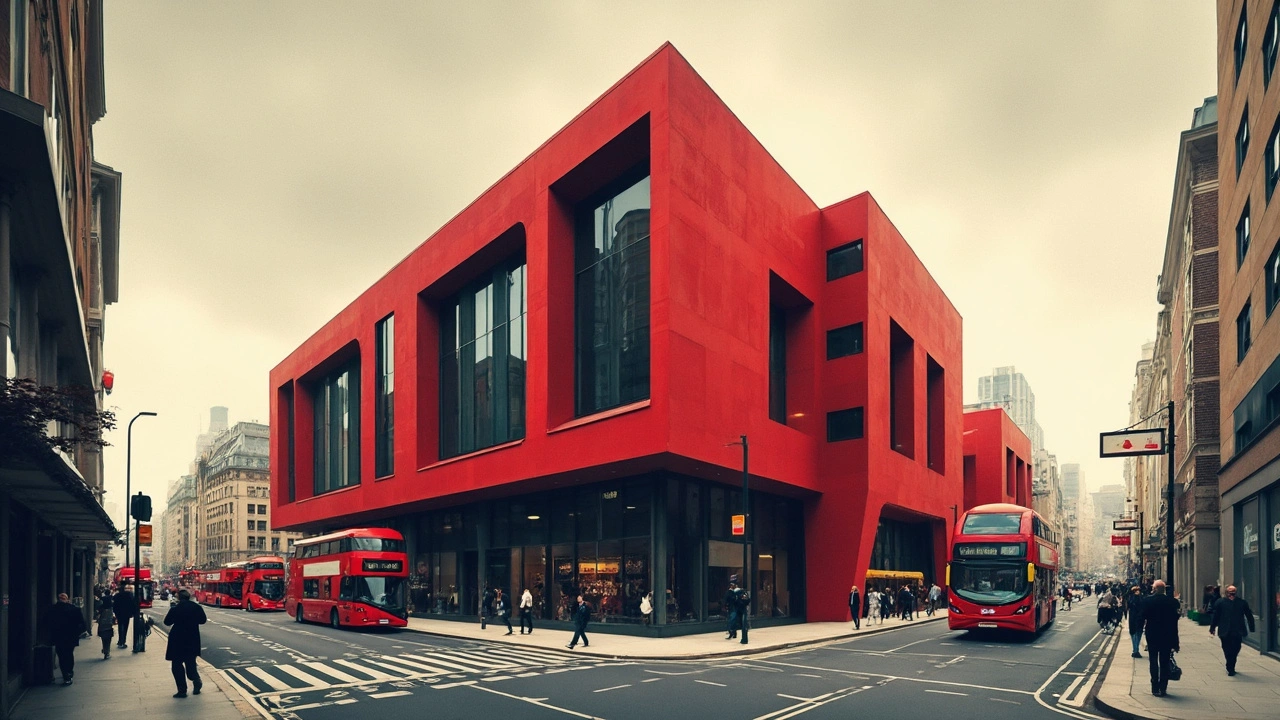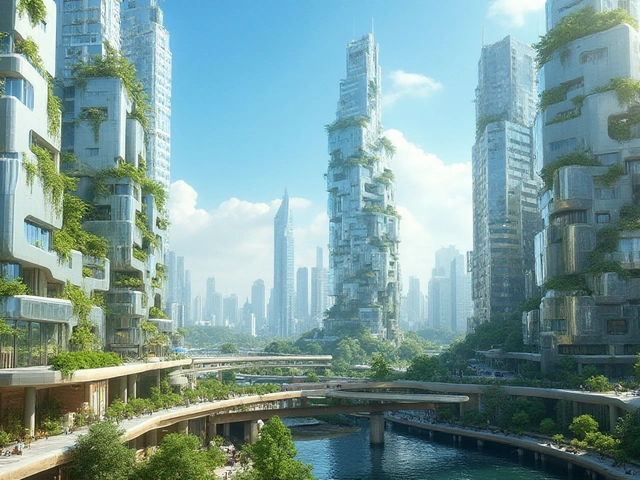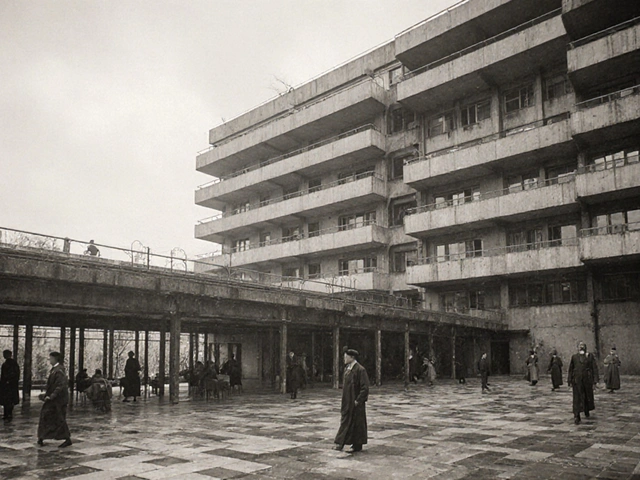Forget what you know about boring buildings. Constructivist architecture is anything but predictable—think wild shapes, bold lines, and ideas that came straight from a political revolution. But why did Russian architects in the 1920s ditch old school columns and arches for something that looked like it belonged on the cover of a sci-fi novel?
That’s where the story gets good. These designers weren’t just showing off—they wanted their buildings to work hard. Their mission was to build new kinds of spaces for schools, factories, theaters, even homes, while showing off Soviet power and the push for a new, better society. The results? Some of the oddest, most unforgettable buildings you’ll ever see. It’s not just about how they look, either. Once you know what to look for, you'll start seeing their impact all over today's city skylines.
- What Is Constructivist Architecture?
- A Look Back: How the Movement Started
- Key Features and Famous Examples
- Why Did It Fade Away?
- Spotting Constructivist Inspiration Today
What Is Constructivist Architecture?
If you’ve ever seen a photo of a building that looks like it just came off an assembly line, with stacked blocks and weird angles everywhere, you've probably spotted constructivist architecture. This style popped up in Russia after the 1917 Revolution and is all about using modern materials (think concrete, steel, and glass) to show how functional a building can be. It’s not just about looks—these buildings were designed to be tools for daily life, from factories to worker housing to theaters.
The point was to break free from old traditions. Instead of showing off with fancy decorations, constructivist architects wanted their work to feel industrial, open, and useful for the public. They loved clean lines and shapes that kind of remind you of machinery or toys you click together—a reflection of the new machine age. Want a quick snapshot of what makes a building 'constructivist'? Check out these typical features:
- Geometric forms (lots of rectangles, cylinders, and bold angles)
- Raw materials on display—no hiding concrete and metal
- Open floor plans for flexibility
- Diagonal beams, staircases, and details that shout "function first"
- Plain exteriors without any unnecessary extras
This style was never huge outside the Soviet Union, but a few countries gave it a shot, especially where radical ideas were brewing. Still, most famous constructivist designs are Russian, like the famous Shukhov Tower in Moscow or the Narkomfin Building.
| Name | City | Year Built |
|---|---|---|
| Shukhov Tower | Moscow | 1922 |
| Rusakov Workers' Club | Moscow | 1928 |
| Narkomfin Building | Moscow | 1930 |
The gist? Constructivist architecture was a movement to change everything about how people built and used buildings. It’s direct, practical, and willing to experiment in ways that look wild even today.
A Look Back: How the Movement Started
When you hear about constructivist architecture, imagine post-revolution Russia. The year is 1917. The world just watched a country flip its whole system, and all these new leaders wanted to break from anything that felt old. This didn’t just mean new laws—it meant a whole new look for cities, too.
Artists, architects, and engineers—like Vladimir Tatlin and Alexander Vesnin—jumped in. They were inspired by the energy of industry and new technology. No surprise: some of the first constructivist buildings went up in Moscow and Leningrad. The architect Tatlin’s “Monument to the Third International,” for example, was never built but set the tone. It was a tilted, twisting tower packed with metal and glass. Even if it stayed on paper, the idea just exploded in the creative world. Suddenly, designers wanted everything bold, functional, and modern.
Officially, the movement took off around 1921 after the First Working Group of Constructivists split from more classical artists. For them, buildings were not just pretty art—they needed to help workers, pump up industry, and push society forward. The Red Banner Textile Factory by Erich Mendelsohn and the Rusakov Workers' Club by Konstantin Melnikov are built examples you can still see.
| Period | Key Events | Main Architects |
|---|---|---|
| 1917-1920 | Foundations laid post-Revolution, early ideas spark | Vladimir Tatlin, El Lissitzky |
| 1921-1925 | First Working Group forms, first large projects start | Alexander Vesnin, Moisei Ginzburg |
| 1925-1932 | Peak years: iconic projects across Soviet Union | Konstantin Melnikov, Ivan Leonidov |
Why the wild shapes and industrial materials? It was all about showing off progress—steel, glass, concrete. For the first time, you could see beams, supports, and guts of the building on the outside. You could literally see how things worked. People back then called it “architecture for a new world.”
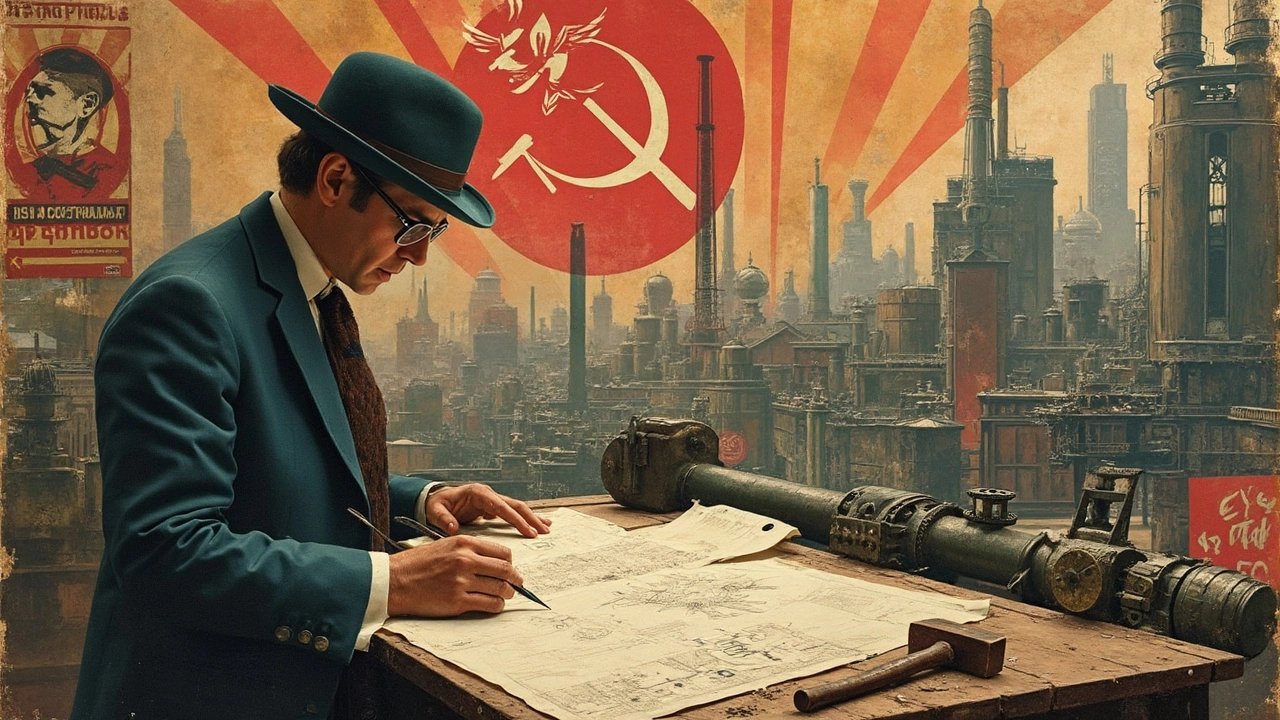
Key Features and Famous Examples
When people talk about constructivist architecture, they mean bold shapes, sharp angles, and structures that almost look like machines. The whole point was to break away from expensive decoration and focus on utility—which made these buildings look futuristic before that was even a style.
Here’s what to spot if you want to pick out a constructivist building:
- Geometric shapes: No fancy carvings or sculptures. Think cubes, cylinders, triangles, and sometimes odd combos of these basic forms.
- Industrial materials: Lots of concrete, steel, and glass. These were new (and affordable) at the time, so architects wanted to show them off.
- Open floor plans: Spaces were built big and open. This made factories and offices more useful, but also said a lot about teamwork and productivity.
- Visible structure: You can often see beams, pipes, and supports on the outside, almost like they’re saying "Hey, look at how we're built!"
- Little to no decoration: It’s all about function here. Anything that isn’t needed, got left out.
If you want to see these ideas in real life, you’ve got to check out some classics:
- Rusakov Workers’ Club (Moscow, 1927-28): Designed by Konstantin Melnikov, this place stands out with its chunky, fan-shaped halls that were totally new for the time.
- Shukhov Radio Tower (Moscow, 1922): Vladimir Shukhov’s spindly, twisted steel tower looks wild even today—and was built in just nine weeks. It's a symbol of the daring side of constructivism.
- Zuev Workers’ Club (Moscow, 1927-29): Ilya Golosov went for a true “machine-age” feel here, with glass cylinders and a strong, blocky front. It still pops in photos a century later.
- Lenin Tribune: This was a temporary structure, but its sharp wedge shape and exposed framework are legendary among design nerds. Built for public rallies, it screamed modernity.
People are often surprised just how many of these buildings are still standing. Check out some quick numbers on Moscow’s constructivist icons:
| Building | Architect | Year Built | Status Today |
|---|---|---|---|
| Rusakov Workers’ Club | Konstantin Melnikov | 1928 | Still in use, landmark |
| Shukhov Radio Tower | Vladimir Shukhov | 1922 | Preserved, closed to public |
| Zuev Workers’ Club | Ilya Golosov | 1929 | Active, partially renovated |
Not all constructivist buildings have survived, but the ones that did are living proof that this movement wasn’t just about wild ideas—it was also about creating buildings that work, stand out, and stay relevant.
Why Did It Fade Away?
So if constructivist architecture was such a big deal, why don’t we see even more of it today? Well, turns out, politics and changing tastes pulled the plug on this wild style way earlier than you might expect.
By the early 1930s, the Soviet government switched gears and pushed for a different look: something less "radical experiment" and more "grand empire." Stalin wanted buildings that shouted power in a more traditional style, kind of like what you'd see in old European capitals. The bold glass-and-steel creations of constructivism suddenly looked too modern and too weird for official taste. Architects who stuck with the look found their projects stalled, canceled, or redesigned.
There were other reasons, too. Some constructivist buildings were tough to construct with the materials available in the Soviet Union back then. Steel and concrete were expensive, and skilled construction crews were thin on the ground. Function and durability sometimes got sacrificed for ambitious designs. And honestly, when money's tight and city leaders want fast results, wild experiments are the first to get scrapped.
Here's a quick breakdown of how things changed for this style:
| Year | Event | Impact on Constructivism |
|---|---|---|
| 1928 | First Five-Year Plan launches | Focus shifts to industrial output, practicality wins |
| 1932 | Soviet government outlaws independent art groups | Official style switches to socialist realism |
| Mid-1930s | Stalinist architecture rises | Massive, classic structures replace constructivist look |
Bottom line? Constructivist architecture was a victim of politics, money problems, and a desire for more "respectable" buildings that matched the Soviet Union’s image shift. The few examples left today are basically survivors—a snapshot from a totally different kind of future that never quite happened.
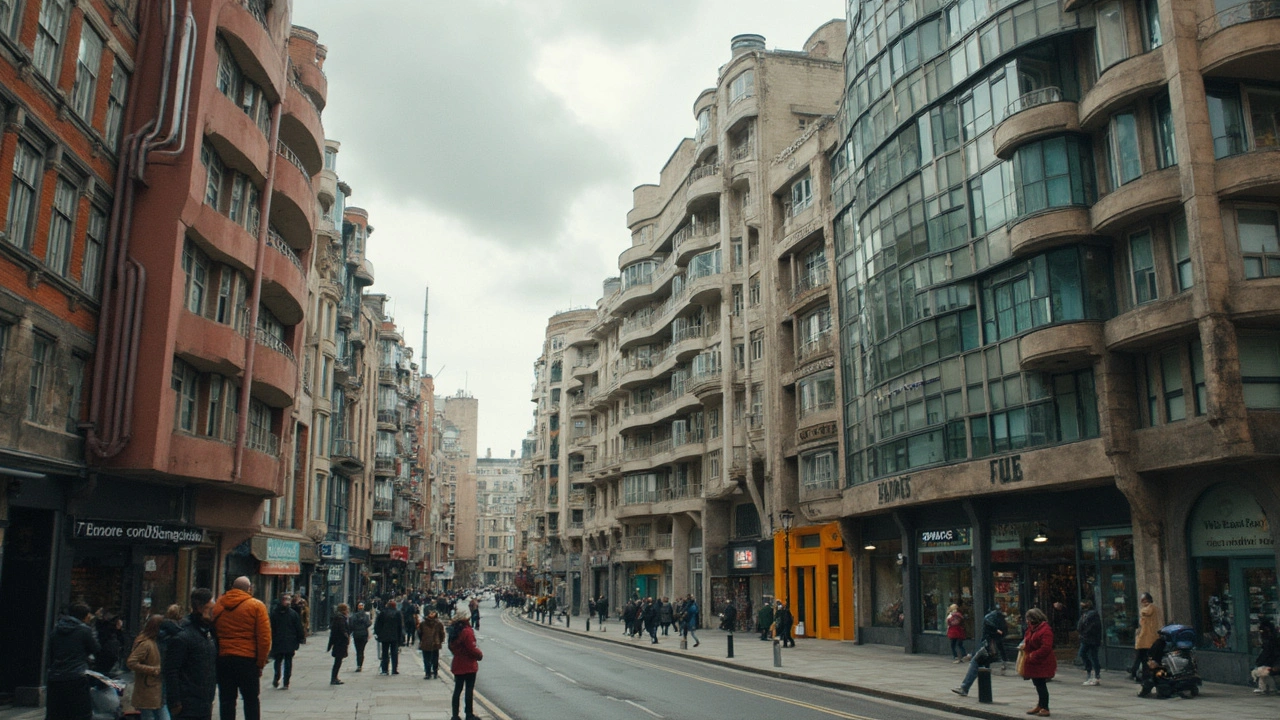
Spotting Constructivist Inspiration Today
You might think constructivist architecture only lives in old photos from the 1920s, but its fingerprints are all over modern cityscapes. If you've ever seen a dramatic, geometric office block or a sleek museum that looks like it could launch into space, you’re seeing the legacy of the constructivist movement in action. The most important thing to notice is just how much today’s architects borrow from the wild shapes and utilitarian vibe of the originals.
Big-name buildings like London’s Tate Modern and Beijing’s CCTV Headquarters pretty much scream “constructivist influence.” Both use bold, blocky shapes and open spaces that focus less on fancy decoration and more on making a statement. Even regular apartment buildings—especially in parts of Eastern Europe—still show off these ideas, with big concrete panels and simple layouts that maximize usefulness.
Wondering how you can spot a constructivist-inspired building? Here are a few quick tips:
- Look for big geometric forms, especially cubes, rectangles, and circles.
- Straight lines and exposed frameworks are a dead giveaway.
- Windows are often arranged in repetitive rows or ribbons across the facade.
- Check for practical details—ramps, roof gardens, or multi-use communal spaces.
- Lack of classical details (like columns or ornamented doorways)—it’s all about function here.
Some architects even admit their love for constructivism. Zaha Hadid said her early work was straight-up inspired by Russian avant-garde designs, and you can totally see it in projects like the MAXXI in Rome and the Vitra Fire Station in Germany.
Just how much has constructivist architecture shaped our cities? Here’s a quick look at the facts:
| Feature | Constructivist Origin | Modern Example |
|---|---|---|
| Geometric shapes | Moisei Ginzburg’s Narkomfin Building (1930) | London’s Tate Modern (2000) |
| Industrial materials | Moscow’s Shukhov Tower (1922) | CCTV Headquarters, Beijing (2012) |
| Open communal spaces | Ivan Nikolaev’s Communal House (1931) | Co-housing developments in Europe |
If you’re hunting for modern buildings with this vibe, check out new urban developments in Berlin, Amsterdam, and even New York. The style has cycled back as a favorite for designers who like things open, modular, and straight to the point—just like the constructivists drew it up a century ago.

